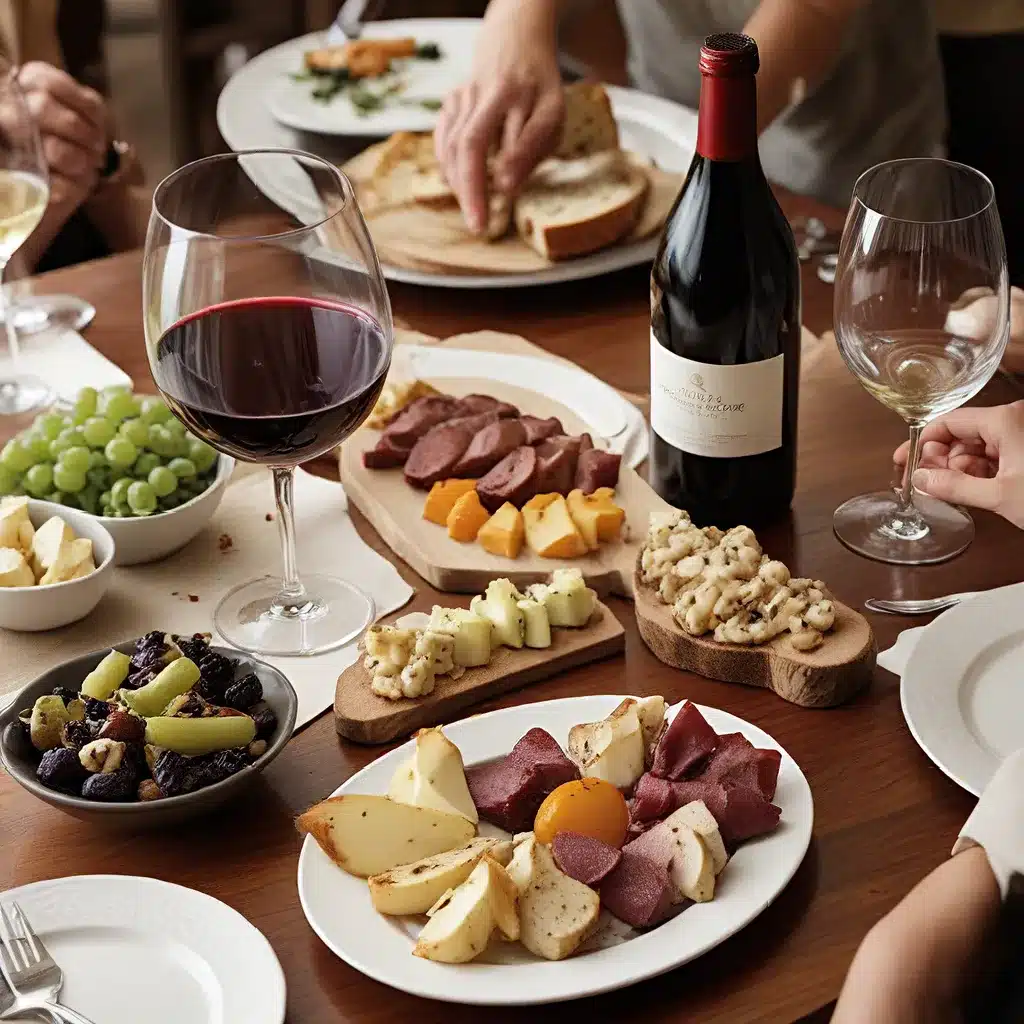
Unlocking the Symphony of Flavors
Imagine a grand culinary stage, where every ingredient is an instrument and the chef is the maestro, conducting a symphony of taste. This is the world of food and wine pairing – an intricate dance where each element plays a unique role in creating a harmonious experience for the senses. It’s not just about satiating hunger and thirst; it’s a delicate interplay that can elevate an ordinary meal into an extraordinary culinary journey.
As I embark on this flavorful adventure, I can’t help but feel a sense of excitement. The possibilities are as vast as the varietals of wine themselves – from the rich, velvety notes of a Bordeaux complementing a succulent steak, to the crisp, citrusy Sauvignon Blanc enhancing the flavors of fresh seafood. It’s a realm where the rules are meant to be broken, and where the unexpected often becomes the most delightful.
Mastering the Fundamental Principles
To truly excel at the art of food and wine pairing, one must first understand the fundamental principles that govern the interplay of flavors. It’s all about creating a synergy where the combination of the dish and the wine enhances the overall dining experience.
Match the Intensity: The first rule of thumb is to consider the intensity of both the dish and the wine. Lighter dishes pair well with lighter wines, while heartier, more robust dishes are best complemented by full-bodied wines. For example, a delicate Pinot Noir harmonizes beautifully with poached salmon, while a bold Cabernet Sauvignon complements a juicy grilled steak.
Balance the Acidity: The acidity in both food and wine should be in harmony. High-acid wines, such as Sauvignon Blanc or Chardonnay, work well with dishes that have a citrusy or tangy component. On the other hand, a creamy pasta dish may benefit from a less acidic wine, like a buttery Chardonnay.
Tame the Tannins: Tannins, found predominantly in red wines, can be softened by the presence of fats in food. This is why a tannic red wine like Cabernet Sauvignon pairs splendidly with a well-marbled steak, as the fats in the meat counterbalance the astringency of the tannins.
Complement or Contrast: Pairing can involve either complementing flavors or creating a contrast. Complementary pairings enhance similar flavors, like a fruity Zinfandel with a berry tart. Contrasting pairings, such as a crisp dry Riesling with spicy Thai cuisine, create a dynamic interplay that excites the palate.
Exploring Unconventional Pairings
While there are tried-and-true pairings that have stood the test of time, the world of food and wine pairing is also a realm where experimentation can lead to unexpected delights. Let’s dive into some unconventional combinations that defy traditional norms.
Champagne and French Fries: The effervescence of Champagne can cut through the saltiness of crispy fries, creating a delightful contrast of textures.
Riesling and Spicy Foods: The natural sweetness and acidity of Riesling make it an ideal companion for spicy dishes, whether it’s Indian curry or Thai noodles.
Rosé and Barbecue: The versatility of a well-balanced rosé can complement the smoky, savory flavors of barbecue dishes, making it a surprising but delightful match.
Chardonnay and Popcorn: The buttery notes in Chardonnay can harmonize with the butter on popcorn, creating a luxurious pairing for a casual movie night.
Malbec and Dark Chocolate: The bold, fruity notes of Malbec can complement the rich bitterness of dark chocolate, creating a decadent finale to a meal.
These unexpected pairings demonstrate that rules are meant to be broken, and sometimes the most memorable combinations arise from the courage to think outside the traditional box.
Enhancing Everyday Dining
The art of food and wine pairing need not be reserved for special occasions or fine dining. With a few simple guidelines, you can elevate your everyday meals and make them extraordinary.
Keep it Local: Pair wines with dishes that showcase local ingredients. Whether it’s a crisp Sauvignbon Blanc with fresh seafood or a robust red blend with a locally sourced hearty stew, celebrating local flavors can enhance your dining experience.
Weeknight Wonders: For quick weeknight meals, opt for versatile wines that can complement a variety of dishes. A medium-bodied red or a well-balanced white can be your go-to choices for everyday dining.
Explore Varietals: Don’t be afraid to experiment with different grape varieties to discover your personal preferences. You might stumble upon a hidden gem that perfectly complements your favorite dish.
Keep it Simple: Sometimes, the best pairings are the simplest ones. A classic Margherita pizza with a light, acidic red like Chianti or a crisp Sauvignon Blanc with grilled chicken can be uncomplicated yet satisfying combinations.
Trust Your Palate: Ultimately, your taste buds are the best guide. Trust your preferences and experiment to find combinations that bring you joy. Whether it’s a casual gathering or a solo meal, the goal is to enhance your culinary experience.
Elevating Dining at Cefalu Seaside
As you embark on this flavorful journey, I invite you to explore the exquisite offerings of Cefalu Seaside Sicilian Restaurant. Their commitment to Sicilian authenticity and culinary excellence makes them a standout choice for those seeking a truly immersive gastronomic adventure.
Cefalu Seaside’s expertly curated wine list complements the richness of their Sicilian dishes, creating an unforgettable harmony for your palate. Uncover the perfect symphony of flavors as you elevate your dining escapades, guided by the tried-and-true tips and basics discussed here.
Cheers to an extraordinary dining experience!

